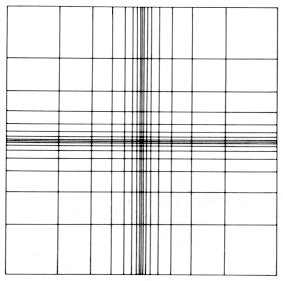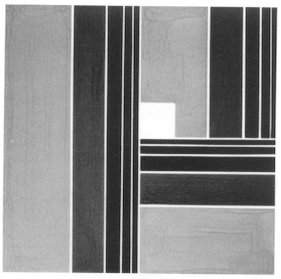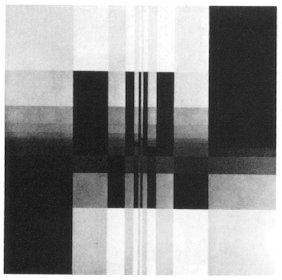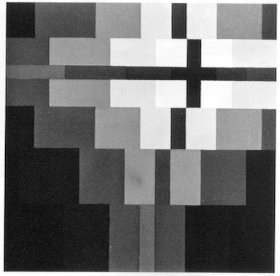|
(6) Gradually changing divisions
(i) Vertical and horizontal division The gradually changing divisions are in contrast with the equal divisions. In a ward, they are the divisions in which the intervals of the dividing lines gradually increase or decrease. This is called "progression". The KOHSEI (Basic Art & Design) using the divisions with a dynamic and unified feeling are created because the intervals increase or decrease regularly. The degree of the change of an arithmetic progression is small. On the other hand, the rate of change is large in a geometric progression. This make us feel a pleasure that quantity changes with acceleration. · In the illustrations
below, the work of Lohse uses an equal ratio divisions in the vertical
and horizontal directions. In other word, it is divided using a geometric
progression. Thus, it give us some different feelings from the other two
examples in the right. Though Richard Paul Lohse was working on graphic
designs at first. Then, he became one of the representative artists in
the current Swiss concrete arts fields along with Max Bill. He is a unique
artist who has been exclusively working on arts by regularly diving a screen
using vertical and horizontal lines.
|



